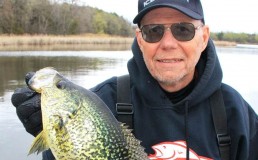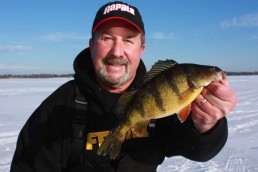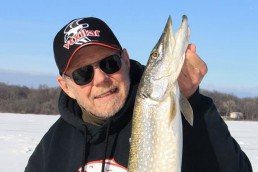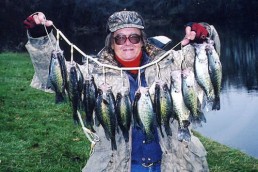Cash in on the Springtime Panfish Bonanza
SHARE THIS POST
Every spring, I look forward to the days when I can drop a boat into open water and fish the shallow water panfish bite. For me, this is an enjoyable time that frequently offers some of the best crappie and bluegill angling of the year.
Most anglers understand that this early season rush to shallow water is not to spawn. The water is too cold for spawning right after ice out. However, the strong instinct to spawn may have something to do with the shallow water movement.
The shallow water panfish migration that happens each spring is all about food. It is about finding locations that will have the warmest temperatures in the lake. It is these warm spots that will harbor the most active invertebrates that become the food source for panfish that are preparing their bodies for spawn.
Typically, shallow, mud bottomed bays that have some protection from the main lake water are the areas to target first. I have found that the more protected and disconnected a bay or channel is, the faster it warms up and the more panfish seem to like it.
As a general rule, these shallow regions are no secret and can get considerable pressure from anglers. Often times, the activity level of the shallow panfish recedes as the boat pressure from anglers heats up. It is important to realize these shallow fish can be very spooky.
In order to combat the spookiness of shallow water fish, I try to be quiet when dropping an anchor and always approach potential hot spots with a trolling motor. I also use long, seven to nine foot rods that allow me to cast far from the boat to search for fish. Once fish are found, do not pressure them by getting too close. I cannot stress this point enough. If you pressure these shallow, spooky fish, they will leave.
Are you enjoying this post?
You can be among the first to get the latest info on where to go, what to use and how to use it!
In some locations, I have learned that the concentration of shallow activity in a bay often takes place around one or two docks. I find it interesting how the fish will congregate around the same structures year after year. Obviously, these docks are offering a certain level of security to the fish. Time on the water will help you determine which docks to target.
The long, 7- to 9-foot crappie rods are spooled with either 4- or 6-pound-test Trilene. I will use the heavier line if I can get by with it, but will quickly switch to the lighter line if the fish are finicky.
I rarely use any live bait in the spring unless I am strictly targeting bluegills. If that is the case, euro larvae,
waxworms or Gulp will do the trick.
Regardless of which species I am targeting, I consistently use very small, feathered jigs or winter panfish jigs tipped with plastic tails. Anglers often forget about utilizing the same winter jigs for spring fishing. Maki or Impulse plastics in brown, red, pink or purple are good choices. Pink and white is my favorite feathered jig color.
As the lake warms up and the fish move out of the shallow bays, panfish can be found staging close to spawning areas. It takes time to find these out-of-the-way spots, but once you do find them, they will produce fish consistently each year.
Spring panfish season is one of my favorite fishing periods of the year. Not every day is going to be memorable, but many are. Besides, it always feels good to be moving through open water in a boat and not drilling holes through the ice.
MWO
SHARE THIS POST
Did you enjoy this post?
You can be among the first to get the latest info on where to go, what to use and how to use it!
Jerry Carlson
Jerry Carlson began his writing career in 1987 and covers both hunting and fishing topics. He currently writes for numerous media outlets and does radio work with WJON AM in St. Cloud, Minn. He has authored a book called Details for Locating and Catching Fish.



